These sketches show a different, and personal, view of the San Francisco Bay and many of the GGNRA park lands. The sketch of Alcatraz Island, drawn from Angel Island, shows the full military might of Alcatraz, demonstrating its defensive role in the protection of the Bay. The second image captures the Elko Schooner at Lands’ End. The 1881 illustration depicts early views of Fort Point, Angel Island, and the Golden Gate Strait in the background. Several sketches were drawn on Angel Island, with no real understanding of why the artist was there but they show some of the early military buildings and scenes around Camp Reynolds. His sketch of Seal Rocks near the Cliff House seems to show a time when numerous seals used and played near the rocks.
Researchers frequently focus on photography to show what an area or time period looked like. Are these sketches any less valuable than a photograph, or do they artistically capture the time and place just as well?
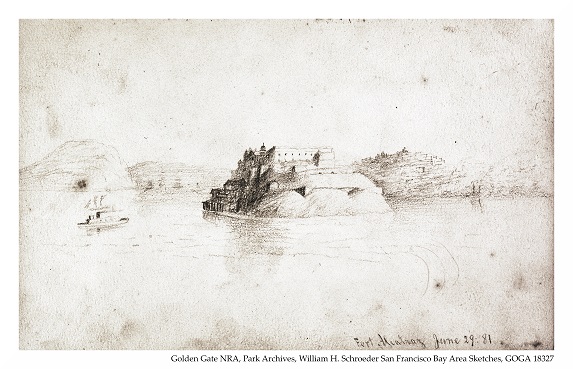
The artist, William H. Schroeder, was born on 11 January 1851 to German immigrants Emile (Lemme) and Johannes C. Schroeder in New Orleans, Louisiana, but soon moved to Nauvoo, Illinois where the family was part of a socialist commune operated by the Icarians, Utopian idealists founded by the French radical Etienne Cabet. In 1863, William's mother died shortly after giving birth to his youngest brother, Emil. Unable to care for the young child, Johannes gave Emil up for adoption to his wife’s brother, Edward Lemme, and his wife, Henrietta. At the age of nine, William was sent to a private school in Davenport, Iowa, where the Lemme family had also relocated.
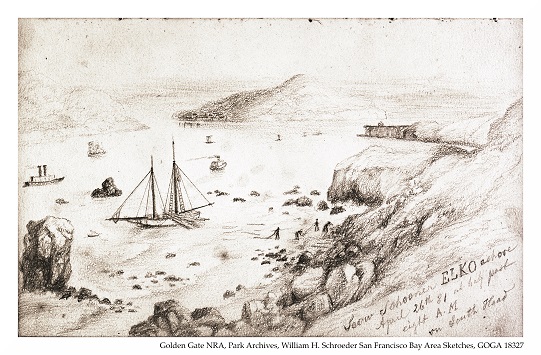
While at school, he began to show an affinity for the artistic trades and studied fresco painting, with which he had become familiar while living amongst the Icarians—known for their artistic skills. Working all the while, he soon saved enough to money to journey to Germany, where he studied in Hamburg, Berlin, Dresden, and Vienna, eventually becoming a pupil of the painter and sculptor Thorwaldsen of Denmark. He returned to the United States in 1876, and briefly resided in New York before moving on to Philadelphia where he worked for the chief architect of the Centennial Exposition, Schwartzman.
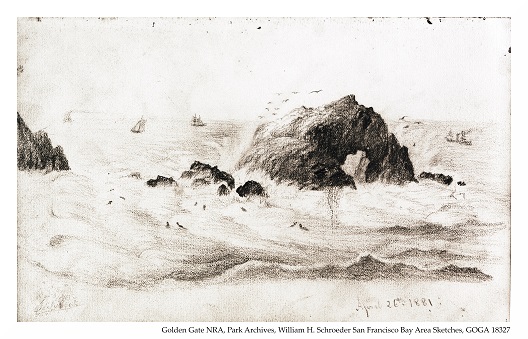
When the Exposition finished, Schroeder traveled to Southern California to visit his father and brothers, who had established a well-regarded signage and fresco business in Los Angeles. William finally settled in San Francisco where he founded The California Art Glass and Cutting Works in 1879. The Company was formally incorporated in 1893 and became one of the most renowned companies of its kind on the west coast. Primarily known for their church memorial windows, two examples still survive: the stained-glass windows at St. John’s Presbyterian Church at the corner of Lake and Arguello in San Francisco, and those installed in the First Baptist Church of Oakland on 22nd Street.
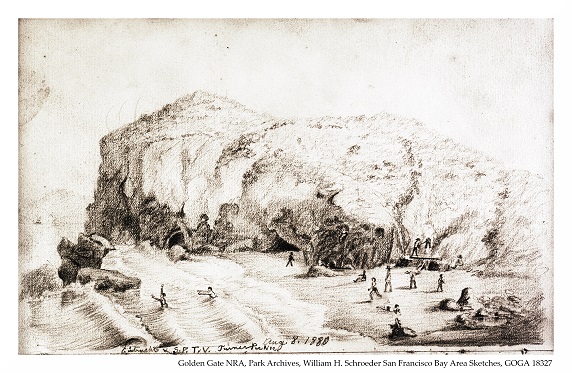
In 1900, the company exhibited a pair of windows depicting the Chinese Dragon and a Cupid and Psyche at the Paris Exposition and won the silver medal. Schroeder became a fixture in the San Francisco artistic community, lecturing on the history of art-glass production and joining the San Francisco Turnverein Club. His sketch from 1880 depicts some activity of the club at what we believe is a local San Francisco beach on August 8th of 1880. The German Turnverein clubs in America were social and political clubs that focused on German Heritage and physical fitness. These turnverein clubs are thought to have directly influenced modern gymnastics and Pilates and is likely why the many figures in the drawing are shown in various activities.
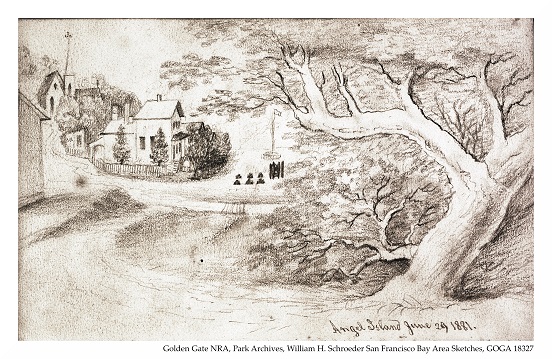
In May of 1882, William married San Francisco native Julia Breuer, and the couple had two daughters—Juliet and Clara. Clara married an employee of the California Art Glass and Cutting Works, Jacob Strohmaier, who left the Works in 1912 to found the Gernhardt-Strohmaier Company, which focused on stoves and appliances.
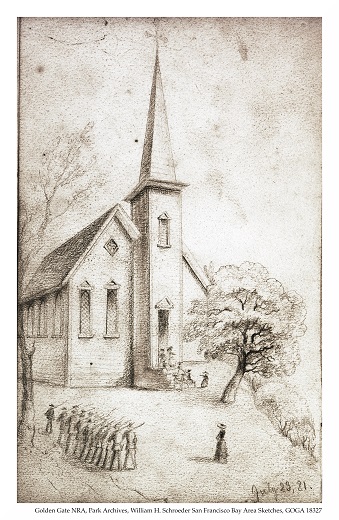
When William Schroeder died in 1913, his grandson, Erwin J. Strohmaier, was two years old. Born in San Francisco on 17 April 1911, young Erwin moved with his mother, Clara, and father, Jacob, to Oakland, and there he was raised—eventually working in the family appliance business for 31 years as a salesman and repairman.
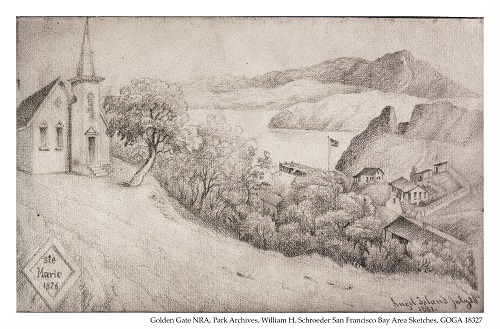
In addition to this, Erwin worked in the Geology and Landscape Architecture Departments at U.C. Berkeley, and as a research assistant at U.C. Livermore Lab. He served with the U.S. Air Force during World War II, stationed in England as a photographer where his skills and as a machinist and woodcarver were frequently of use. In his retirement, he served as a docent in the History Department at the Oakland Museum for 16 years. Active in organizations such as the Sierra Club and the Berkeley Camera Club, he died on September 4th, 2003.
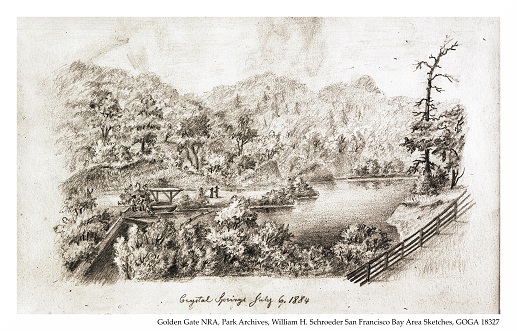
This collection was made from a sketchbook created by William Schroeder that was loaned to the Golden Gate National Recreation Area (GGNRA) by his grandson, Erwin Strohmaier, in March of 1989. During this time the National Park Service was researching the “Elko” wreck for a Submerged Cultural Resources Assessment. Which is an examination of the known underwater locations of shipwrecks to record them for perpetuity. During that research, Erwin allowed the National Park Service to make copies of these sketches for the purpose of research and now for everyone to see.
